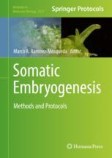Search
Search Results
-
Fusing Genotype and Soil Organic/Inorganic Amendment to Improve Saline-sodic Properties and Rice Productivity
Soil salinization and sodification have become a considerable threat to sustainable crop production for food security. The efficient biological...

-
Luteolin alleviates inorganic mercury-induced liver injury in quails by resisting oxidative stress and promoting mercury ion excretion
Background
Inorganic mercury is a well-known toxic substance that can cause oxidative stress and liver damage. Luteolin (Lut) is a kind of natural...

-
Organic-Inorganic Ion Exchange Materials for Heavy Metal Removal from Water
Heavy metal contents in natural water resources and industrial wastewater threaten the environment and human health. For this reason, heavy metal...
-
Phosphorus (P) mobilisation from inorganic and organic P sources depends on P-acquisition strategies in dioecious Populus euphratica
Dioecious species have secondary trait dimorphism in resource acquisition, allocation, and a skewed sex ratio. Yet, it is unclear how their...

-
Inorganic Compounds that Aid in Obtaining Somatic Embryos
Somatic embryogenesis (SE) is a process that allows formation of embryos from somatic cells; this biological process has different stages that first...
-
Mechanism of lead adsorption by a Bacillus cereus strain with indole-3-acetic acid secretion and inorganic phosphorus dissolution functions
BackgroundHeavy metal pollution has become a major source of environmental pollution because of increasing industrialization. Microbial remediation...

-
The Science of Microbial Enzymes as Detoxification Tool for Inorganic and Organic Pollutants
A variety of enzymes from bacteria, plants, and fungi have been discovered, which help in the degeneration of toxic organic contaminants. In the...
-
Immobilization of Thermoplasma acidophilum Glucose Dehydrogenase and Isocitrate Dehydrogenase Through Enzyme-Inorganic Hybrid Nanocrystal Formation
The development of green catalysts, specifically biocatalysts, is crucial for building a sustainable society. To enhance the versatility of...

-
Management of inorganic elements by overwintering physiology of cold hardy larvae of European corn borer (Ostrinia nubilalis, Hbn.)
The European corn borer ( Ostrinia nubilalis , Hbn.), enters diapause, a strategy characterized by arrest of development and reproduction, reduction of...

-
Heavy Metals and Other Toxic Inorganic Ions
The term heavy metals is used arbitrarily to summarize a group of metals, whereby a clear, scientifically accepted definition is lacking. Mercury is...
-
Distribution of inorganic nitrogenous species and nitrification in the mangrove environment of the Indian Sundarbans
Nitrification is a vital biogeochemical process during which ammonium (NH 4 + ) is oxidized to nitrite (NO 2 − ) and nitrate (NO 3 − ) using oxygen....

-
Calcium and Phosphate Ion Uptake, Distribution, and Homeostasis in Cells of Vertebrate Mineralized Tissues
The chapter considers mechanisms by which cells regulate calcium and phosphate ion homeostasis with respect to the induction of extracellular...
-
Effect of replacing inorganic iron with iron-rich microbial preparations on growth performance, serum parameters and iron metabolism of weaned piglets
This study aimed to investigate the effects of replacing of dietary inorganic iron with iron-rich Lactobacillus plantarum and iron-rich Candida utilis ...

-
Ion uptake in naturally acidic water
The first studies on ion regulation in fish exposed to low pH, which were inspired by the Acid Rain environmental crisis, seemed to indicate that ion...

-
Combining organic and inorganic fertilization increases rice yield and soil nitrogen and carbon: dissolved organic matter chemodiversity and soil microbial communities
Background and aimsDissolved organic matter (DOM) is an active component of the soil organic carbon (SOC) and nitrogen (N) pool. However, the...

-
Adaptation of Ulva lactuca in low-salinity and high-nutrient water environment and its synergistic microbial effect on inorganic nitrogen removal
Excess inorganic nitrogen in offshore estuarine areas can adversely affect coastal water quality. To explore the bioremediation potential of Ulva...

-
Soil Inorganic Carbon in Dry Lands: An Unsung Player in Climate Change Mitigation
In dryland soil ecosystem, soil inorganic carbon (SIC) is a hidden treasure, which refers to the parent rock carbonate formed during weathering...
-
More than stoichiometry: the molecular composition of inorganic and organic substrates controls ammonium regeneration by bacteria
The mineralization of nitrogen (N) and especially the regeneration of ammonium are critical processes performed by bacteria in aquatic ecosystems....

-
Ion Track-Based Nanofluidic Biosensors
During the past decade, solid-state nanopores and nanochannels (SSNs) have emerged as a new class of devices for the creation of nanofluidic...
-
Selective uptake of organic and inorganic nitrogen by Betula platyphylla seedlings from different provenances
Nitrogen (N) is essential in regulating plant growth and biomass allocation. Plant N uptake and assimilation influence species adaptation and...

